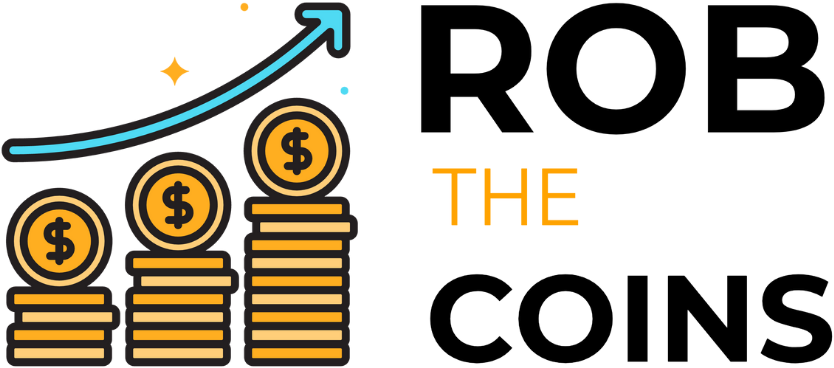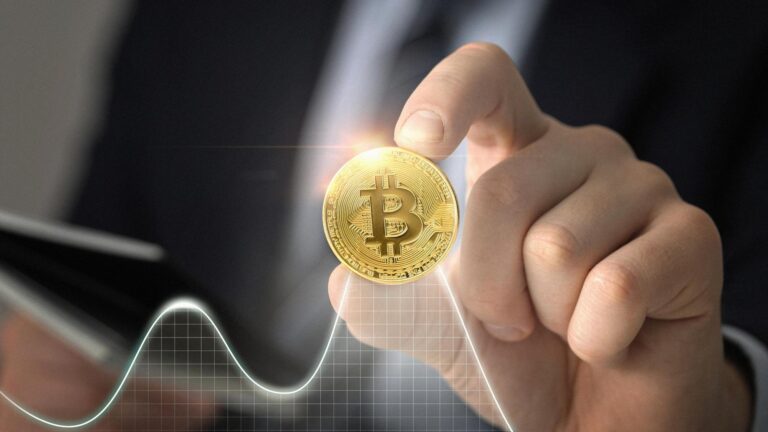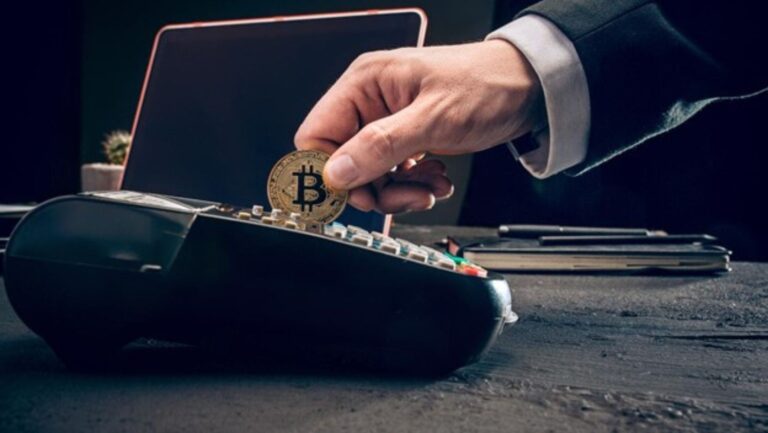Exploring the maze of decentralized exchanges for cryptocurrency trading can often seem challenging. I understand that search all too well, seeking a balance between security, efficiency, and affordability.
Through an extensive exploration of blockchain technology and smart contracts, I’ve uncovered a few standout decentralized finance (DeFi) apps. This guide is here to walk you through finding the crypto trading app that best fits your needs.
Let’s begin.
Key Takeaways
- Decentralized crypto trading apps use blockchain and smart contracts to keep your money safe. They let you control your assets without needing a middleman.
- Some top apps like Uniswap, 1inch Exchange, PancakeSwap, SushiSwap, and Curve Finance offer unique features. They make trades faster and cheaper and provide lots of cryptocurrencies to trade.
- These platforms focus on community support. This means users have a say in updates and new features. Communities also help with tips and advice for better trading.
- Transaction speeds can vary because of network demand. This affects how fast you can trade and the fees you pay.
- Choosing the right app depends on what you need—like low fees, fast transactions, or access to lots of different cryptocurrencies.
Key Features of Leading Decentralized Crypto Trading Apps
Top decentralized crypto trading platforms shine because of a few must-haves. They guard your coins like treasure, make swapping them as easy as pie, and don’t keep you waiting or empty your pockets with high fees.
Security Measures
Security in decentralized crypto trading apps is a big deal. These platforms use encryption and blockchain networks to protect your assets. Think of blockchain as a digital ledger that’s incredibly hard to tamper with.
This means every transaction, once recorded, becomes part of an unchangeable history. Also, most decentralized apps (dApps) don’t hold your funds directly. Instead, they interact with your crypto wallet—like MetaMask or Coinbase Wallet—letting you maintain control over your digital assets.
In cryptocurrency exchanges, security isn’t just a feature; it’s the foundation.
Moreover, smart contracts play a crucial role in ensuring trades happen safely and exactly as intended. Smart contracts are like automated agreements coded into the blockchain—they execute transactions only when certain conditions are met, reducing the risk of fraud and errors.
And let’s not forget about liquidity pools and governance tokens… They’re part of this ecosystem too, adding layers of user involvement and extra security measures by allowing users to vote on key decisions affecting the platform’s operation.
User Interface Experience
Trading cryptocurrencies on platforms like Uniswap or 1inch Exchange, I always look for a smooth user interface experience. It’s crucial. A cluttered or confusing interface slows me down, and time is money in crypto trading.
The best decentralized apps (DApps) get this right with clean designs and easy navigation. They let me find what I need fast, whether it’s swapping tokens on Ethereum blockchain or checking out futures contracts.
I love it when an app includes clear instructions and tooltips. This helps a lot, especially when trying new features like yield farming on PancakeSwap or liquidity pools on Curve Finance.
Plus, knowing I can do all this from my phone makes life easier. Mobile-friendly DApps means I can trade or check my portfolio anywhere—no need to be stuck at my desk.
Transaction Speeds
I’ve traded on various decentralized crypto trading apps and learned that transaction speeds can make or break the experience. Fast trades feel like a breeze, especially when market conditions change quickly.
On platforms like Uniswap and SushiSwap, transactions happen in seconds—thanks to efficient blockchain technology. Yet, gas fees sometimes spike with demand, affecting how fast your trades go through.
Fee structures come next, impacting your total investment return over time. After all, lower fees mean I keep more of what I earn from each trade….
Fee Structures
Moving on from transaction speeds, let’s talk money—specifically, how much trading will cost you. Decentralized exchanges often boast lower fees compared to their centralized counterparts.
Why? There’s no middleman taking a cut of your transactions. Instead, you pay network fees for blockchain operations and, sometimes, a small percentage to the platform.
Most decentralized platforms use a “maker-taker” fee model. If you’re adding liquidity to the market—you’re a maker—and typically enjoy lower fees. Taking liquidity away? Then you’re a taker and might pay slightly more.
Fees vary widely across platforms; some charge 0.1% per trade, while others may be higher or even offer zero-fee trades under certain conditions.
Every trade matters; keep an eye on those fees.
Transaction costs can also depend on the crypto assets you’re dealing with and the current state of network congestion—especially important for traders leveraging Ethereum-based tokens like ERC-20s or indulging in activities on Binance Smart Chain (BSC).
Choosing the right DEX means balancing between low fees and high liquidity—they often go hand-in-hand for optimal trading experiences.
Uniswap: Leading the Decentralized Exchange Space
Uniswap stands out in decentralized finance, making swapping different types of digital currencies easy and secure. Explore further to see how it’s changing the game.
Overview and Unique Offerings
I’m diving right into the heart of Uniswap, a trailblazer in the decentralized crypto trading app space. Uniswap makes swapping ERC-20 tokens easy and efficient without needing an order book.
This innovation comes from utilizing liquidity pools that allow assets to flow freely. It’s a game-changer—transforming how traditional trading operates by enabling direct peer-to-peer transactions secured by blockchain technology.
One thing setting Uniswap apart is its unique Automated Market Maker (AMM) system. Instead of matching buy and sell orders, prices for trades are determined by a mathematical formula based on the supply and demand within each pool.
This means you can trade cryptocurrencies instantly, at any time, without waiting for someone else to match your trade. Plus, it opens up opportunities for users to become liquidity providers themselves, earning fees on trades that occur in their pool.
With this approach, Uniswap has pioneered a new way for people to interact with digital assets—making it a cornerstone of DeFi platforms today.
Pros & Cons
In my journey through crypto trading, I’ve closely examined decentralized apps. Their unique features have reshaped how we trade digital assets today. Here’s an overview of the pros and cons based on direct experience and thorough analysis.
Pros:
- Enhanced user privacy: Unlike centralized platforms like Robinhood Crypto or Coinbase, decentralized exchanges (DEXs) like Uniswap don’t require personal information. Your trades stay private.
- Full control over funds: You hold your keys; hence, you control your assets. There’s no need to trust a company with your crypto as you would with traditional online brokers or banks.
- Innovative features: Platforms like PancakeSwap introduce yield farming, letting users earn rewards by staking their tokens—a leap beyond simple trading.
- Access to a broad range of assets: DEXs often list new tokens faster than centralized counterparts. This access can lead to discovering potential gems early in their market entry.
- Lower risk of server downtime: Decentralized systems distribute operations across numerous computers, reducing the chances of downtime that can lock you out of trading at crucial times.
Cons:
- Complexity for beginners: The learning curve can be steep compared to using apps like E*TRADE or Crypto.com. Understanding wallets, smart contracts, and liquidity pools might overwhelm new traders.
- Slower transaction speeds: Depending on the blockchain network’s congestion and the DEX’s design, transactions might not be as quick as those on centralized platforms such as Kraken or Gemini.
- Variable transaction fees: Fees can fluctuate widely with network demand—especially on Ethereum-based exchanges like SushiSwap—potentially eating into profits from small trades.
- Community-driven development is innovative but can lead to unpredictable changes and updates that might confuse less tech-savvy users.
- Limited customer support: Finding help for issues may be more challenging as there’s often no central support team; assistance mainly comes through community forums or social media channels.
Using these decentralized crypto trading apps requires weighing these factors carefully against your trading style and goals. Next up, I’ll explore Uniswap’s landscape—perhaps the most talked-about name in this space today!
1inch Exchange: Aggregating for Better Rates
I keep an eye out for platforms that make my crypto trading more efficient and cost-effective. That’s where 1inch Exchange steps in, acting like a superhero in the decentralized finance (DeFi) space.
This platform isn’t just another run-of-the-mill decentralized exchange; it uses sophisticated algorithms to scan various DEXs (decentralized exchanges) in real-time. The goal? To find me the best possible trade rates across the vast sea of options.
Think of it as having a personal assistant who scours the market for deals, ensuring I don’t overpay when swapping digital assets.
What truly sets 1 Inch apart is its unique aggregation feature—it combines offerings from different exchanges into one single transaction to optimize trading outcomes. Imagine combining pieces from multiple puzzles to complete a picture much faster; this is essentially what 1-inch does with trades.
By doing so, it significantly reduces slippage and ensures I’m getting more bang for my buck—or should I say, coins for my crypto.
In the rapidly changing world of cryptocurrencies, using tools like 1inch Exchange has transformed how I approach trading, making every transaction not just a trade but an optimized maneuver within this digital ecosystem.
PancakeSwap: Innovating with Yield Farming
PancakeSwap caught my eye as it’s revolutionizing the decentralized finance space through yield farming. What sets it apart is its use of an automated market maker model, which allows trading between crypto assets without needing a traditional buyer and seller match.
The platform offers impressive liquidity for traders and adds to the diversity of crypto exchanges by focusing on user rewards. I’ve personally dived into their syrup pools and farms, experiencing first-hand how earning their native CAKE tokens can be both fun and profitable.
Their emphasis on community-driven features also shines through in their governance model. Holders of CAKE get a vote in key decisions, ensuring the platform evolves in ways that benefit its users most.
With features like lottery systems and NFTs, PancakeSwap doesn’t just stop at being a mere exchange; it’s crafting a whole ecosystem where traders can find numerous ways to invest, earn, and participate beyond simple trades.
Moving forward to SushiSwap next…
SushiSwap: Community-Driven Development
I’ve been trading crypto for a while and have seen many decentralized exchanges (DEXs) come and go. SushiSwap stands out largely due to its community-driven approach. Launched as a fork of Uniswap in 2020, it quickly made a name for itself.
What’s unique about SushiSwap is its emphasis on the community aspect—giving power back to the users through its native token, SUSHI. Holders can vote on key proposals that shape the future direction of the platform.
This direct involvement fosters a strong sense of ownership among users.
My personal experience with SushiSwap has been positive; it offers features like yield farming, staking, and lending that are simple to use but highly effective in maximizing returns from crypto assets.
The platform supports various stablecoins and other major tokens, making it versatile for different trading strategies. Moreover, decentralization isn’t just a buzzword here—it’s evident in everything from liquidity provision to governance, setting SushiSwap apart in the crowded DEX landscape.
Now, let’s shift our focus to Curve Finance…
Curve Finance: Specializing in Stablecoin Trading
Moving from a focus on community-driven platforms like SushiSwap, another standout is Curve Finance. This decentralized crypto trading app shines by specializing in stablecoin trades.
Its design makes swapping between different types of stablecoins smooth and cost-effective. Here’s why that matters to us as traders: Stablecoins offer a way to escape the wild volatility common with other cryptocurrencies without moving our funds back into fiat currency.
Curve stands out because it offers deep liquidity pools for these swaps. This means that even for big trades, the price impact is minimal – saving us money. The platform uses an automated market maker model but tweaks it specifically for stablecoins to ensure efficiency and lower slippage rates than you might find elsewhere.

Using Curve can make a significant difference in managing portfolios focused on stability while still tapping into the growth potential of the crypto market. With its strong emphasis on security measures and maintaining low fee structures, it aligns well with what I look for in a trading platform: reliability, savings on fees, and strength against market fluctuations.
Considerations When Choosing a Decentralized Crypto Trading App
Picking the right decentralized crypto trading app needs careful thought. Look at how much digital currency they swap and what kind of digital cash they support, keeping an eye on their backing from users and creators.
Liquidity And Volume
Liquidity and volume are critical for trading crypto-assets on decentralized exchanges (DEXes). High liquidity means I can quickly buy or sell without affecting the asset’s price too much.
It keeps things smooth when I’m looking to move in or out of positions fast. For instance, top DEXes like Uniswap and SushiSwap offer substantial liquidity pools. This setup allows me to trade with minimal slippage, making it easier to execute strategies without significant price impacts.
Trading volume also tells me a lot about a platform’s activity level and popularity among traders. A higher volume indicates more traders are engaging in transactions, which often leads to better pricing and quicker trades.
Observing platforms like PancakeSwap and 1inch Exchange helps me identify where the action is happening. This way, I can invest with confidence, knowing there’s a vibrant community participating alongside me.
Keeping an eye on these metrics helps optimize my trading experience on DEXes by ensuring efficient market-making mechanisms are at work behind the scenes.
Types Of Supported Assets
After exploring how liquidity and volume can affect your trading experience, it’s crucial to consider the types of supported assets on decentralized crypto trading apps. A diverse range of assets opens up more opportunities for traders like me.
These platforms support a variety of cryptocurrencies, including Bitcoin, Ethereum, and many altcoins such as Cardano and TRX. They also offer access to other digital assets like non-fungible tokens (NFTs) and decentralized autonomous organizations (DAOs).
I always look for exchanges that provide a broad spectrum of assets because they allow me to diversify my portfolio efficiently. Trading algorithms and market makers play a significant role in enhancing the trading environment for these various assets by ensuring liquidity is maintained across different markets.
This diversity means I can trade mainstream cryptocurrencies or explore investments in emerging tokens—all on the same platform.
Community And Developer Support
Moving from the kinds of crypto assets these apps support, community and developer backup is crucial. I’ve noticed strong communities often mean better security, more features, and quick updates.
For example, Uniswap tops in decentralized exchanges (DEX) and shines because of its vibrant community. Developers there work tirelessly to keep things moving smoothly. They listen to feedback and make changes fast.
This makes trading cryptocurrencies a breeze for everyone involved.
In my time trading with SushiSwap and PancakeSwap, communication stood out as their strong suit. Their forums buzz with activity—traders sharing strategies and developers dropping hints on upcoming features.
It’s like having inside information! Plus, these platforms use blockchain technology to innovate constantly, making sure they stay ahead in the game. Being a part of such communities has made a huge difference for me—it’s where I get real-time advice that helps diversify my portfolio effectively without hitting too many bumps along the way.
Conclusion
Picking the right decentralized crypto trade app matters a lot. With options like Uniswap, 1inch, PancakeSwap, SushiSwap, and Curve Finance, you’ve got lots to choose from. These apps offer unique features—like fast transactions and low fees—that make trading smooth.
They also focus on keeping your digital money safe. So think about what you need before choosing. Do you want more options or better rates? Maybe a community that supports its users? Your choice will shape your trading journey.
Happy trading!





